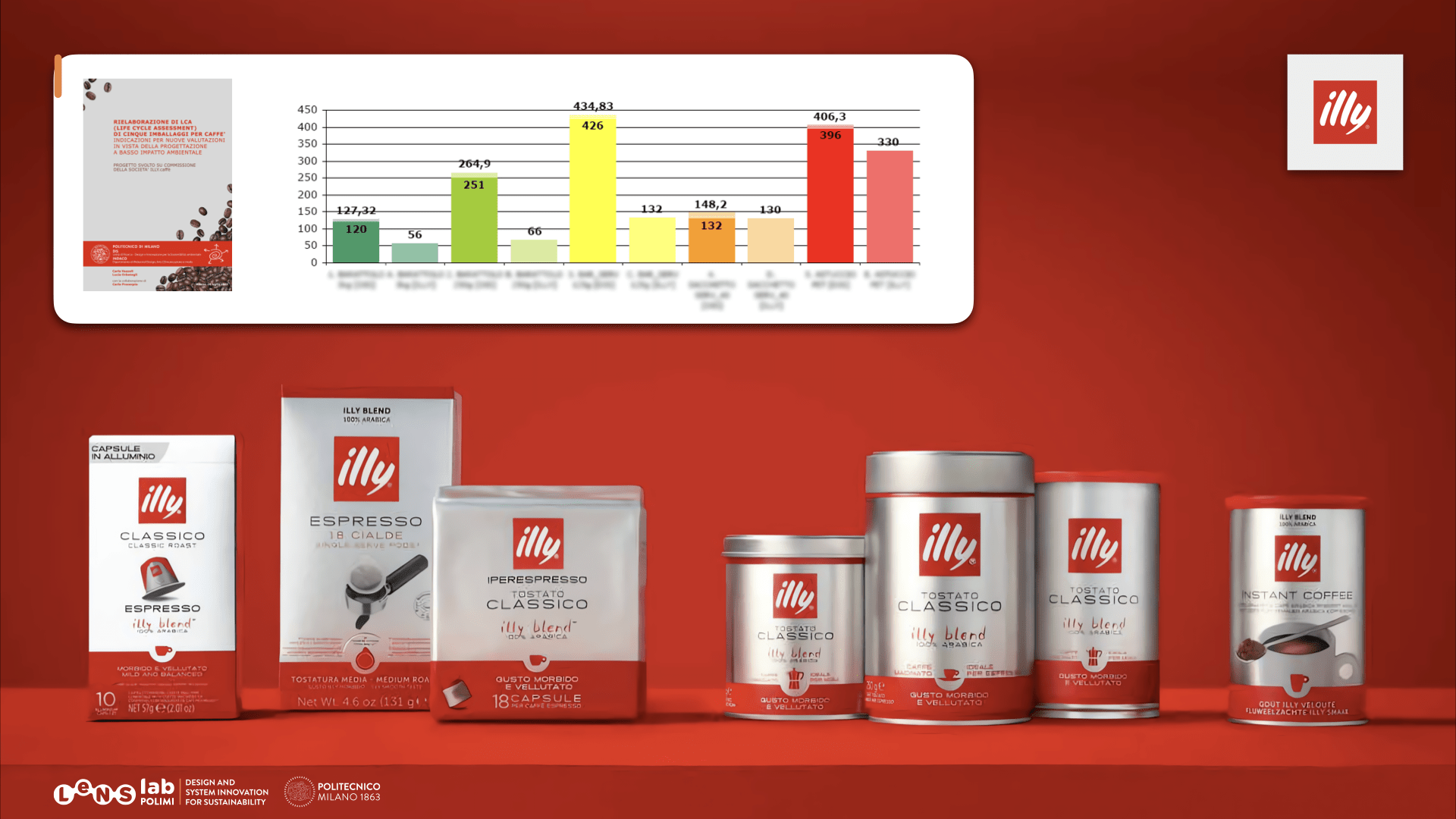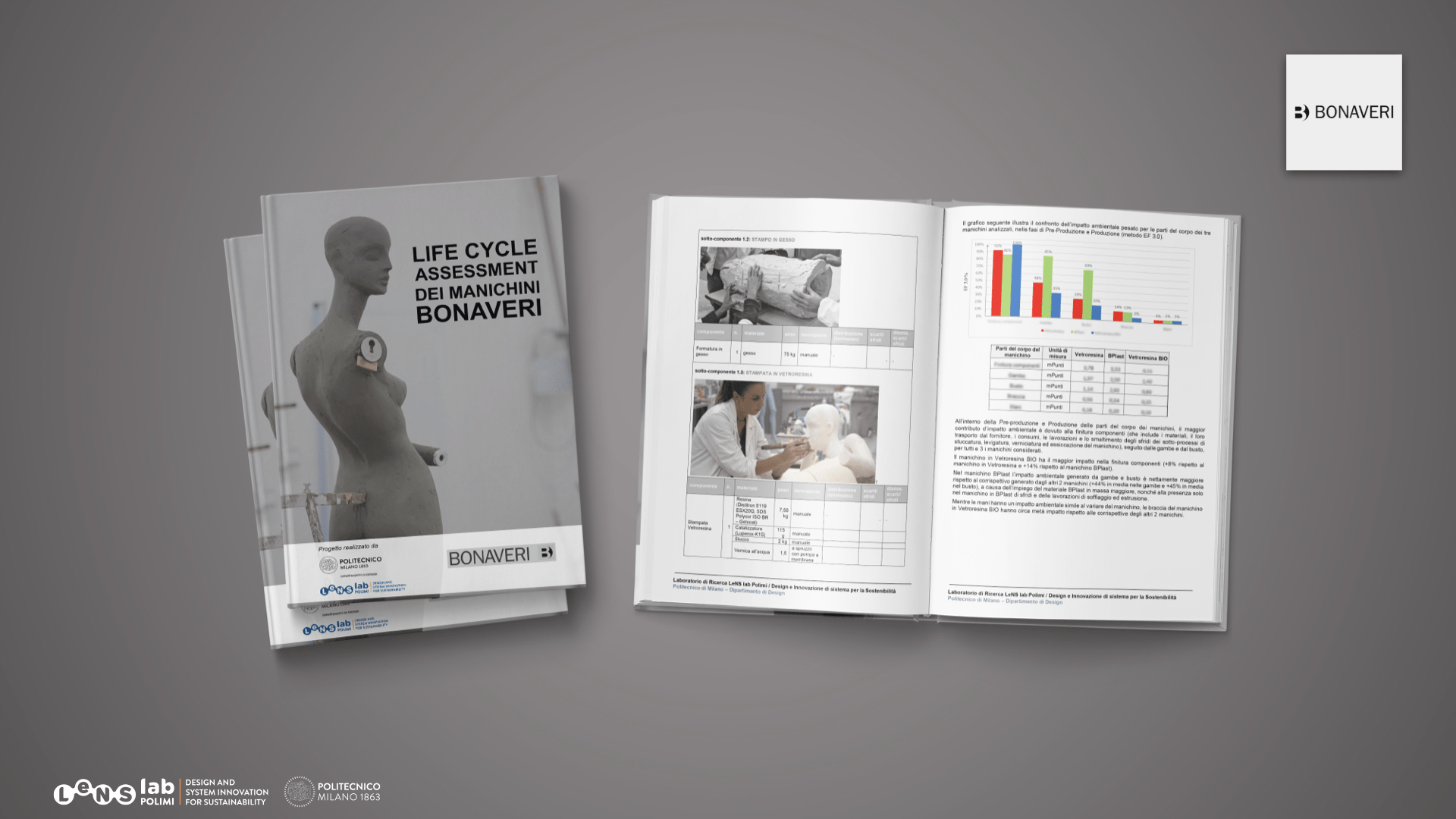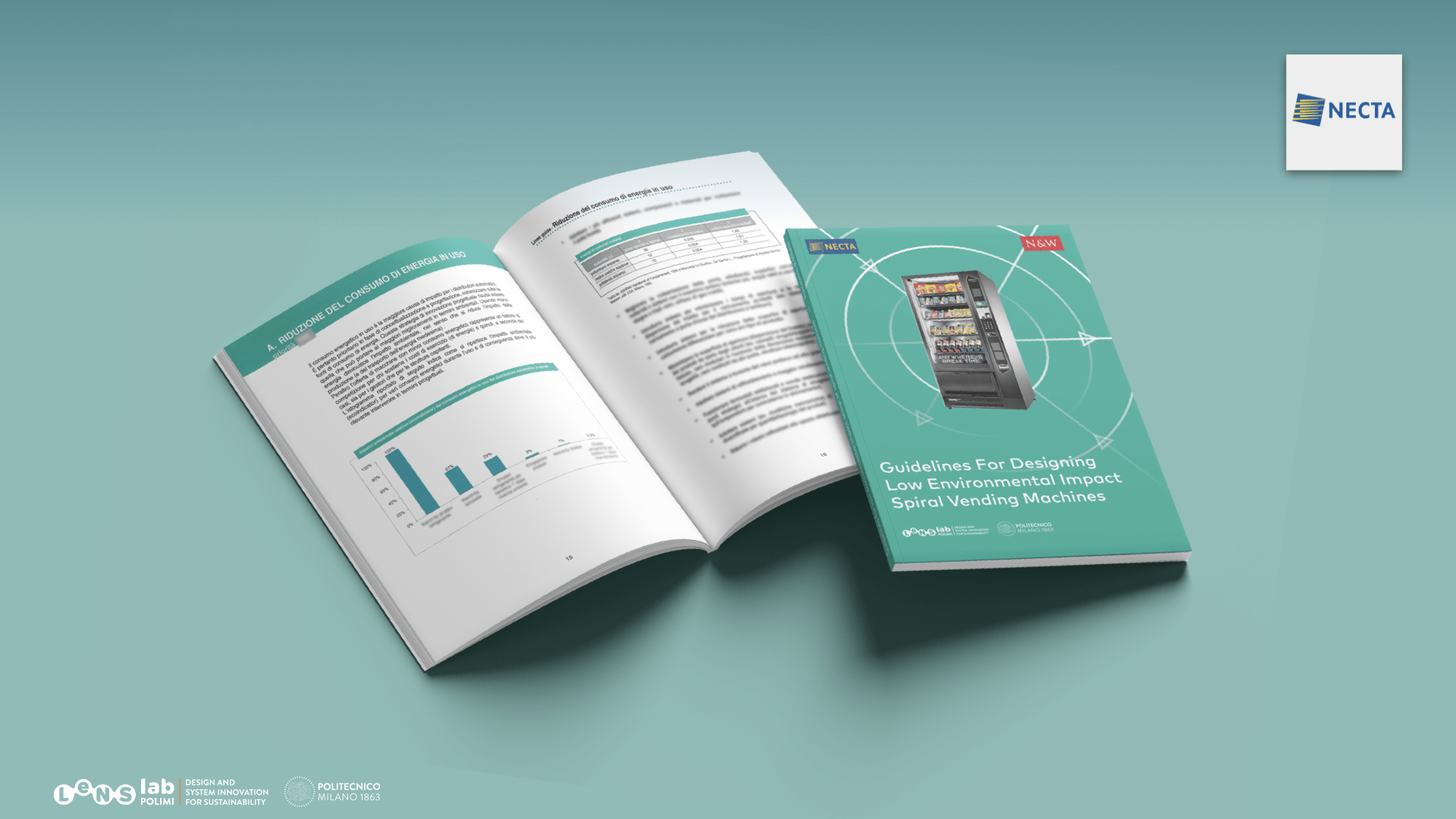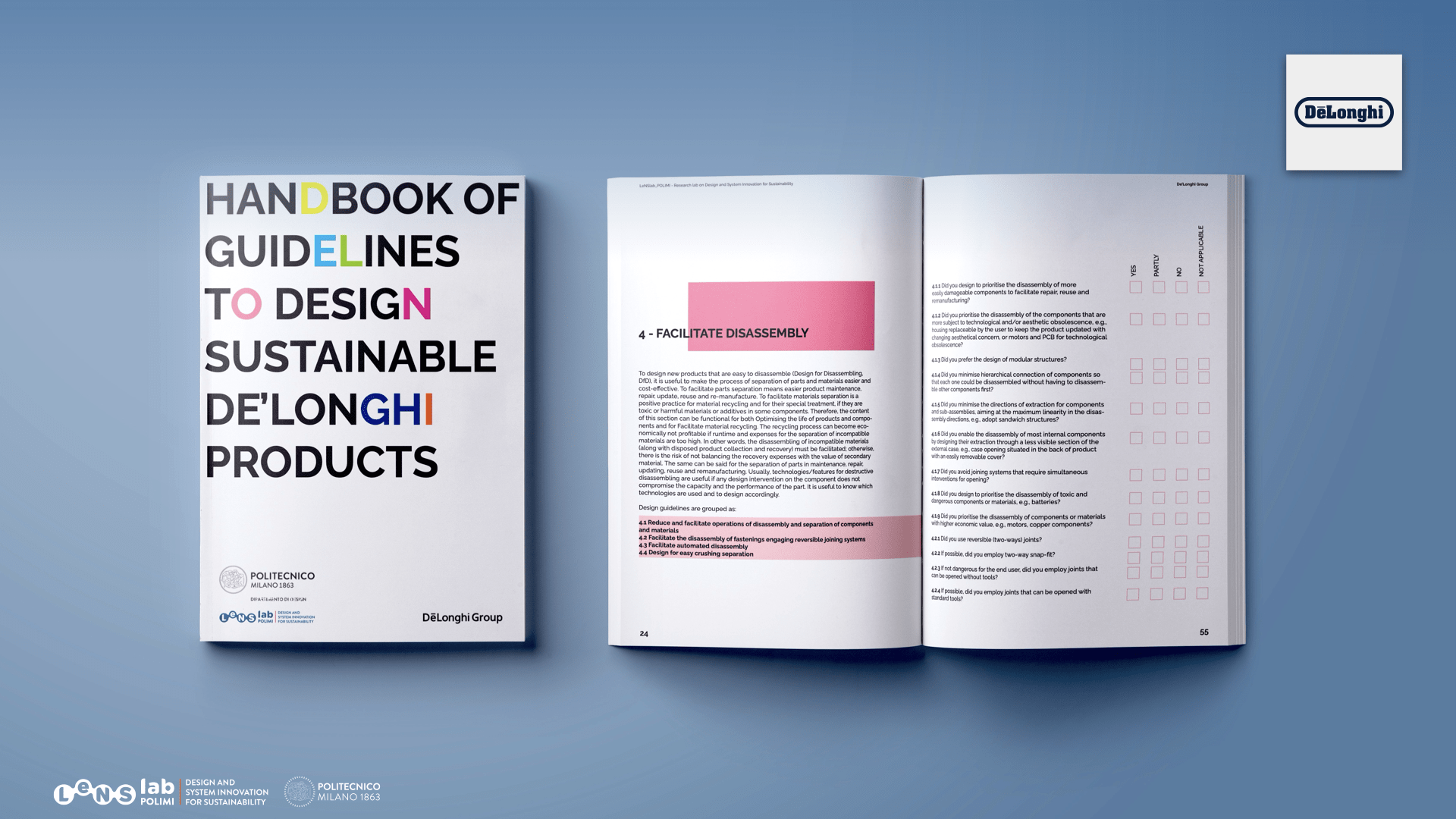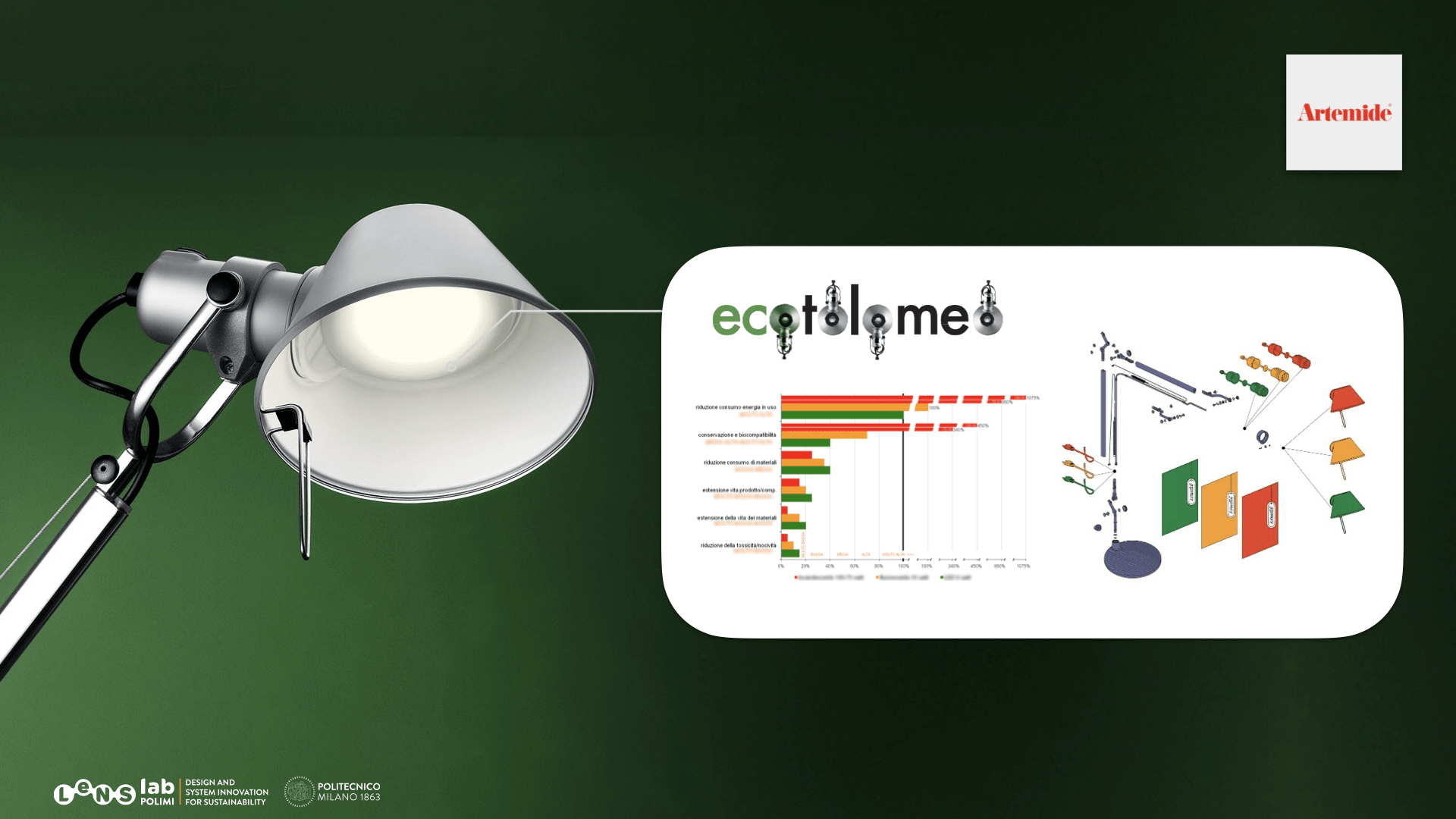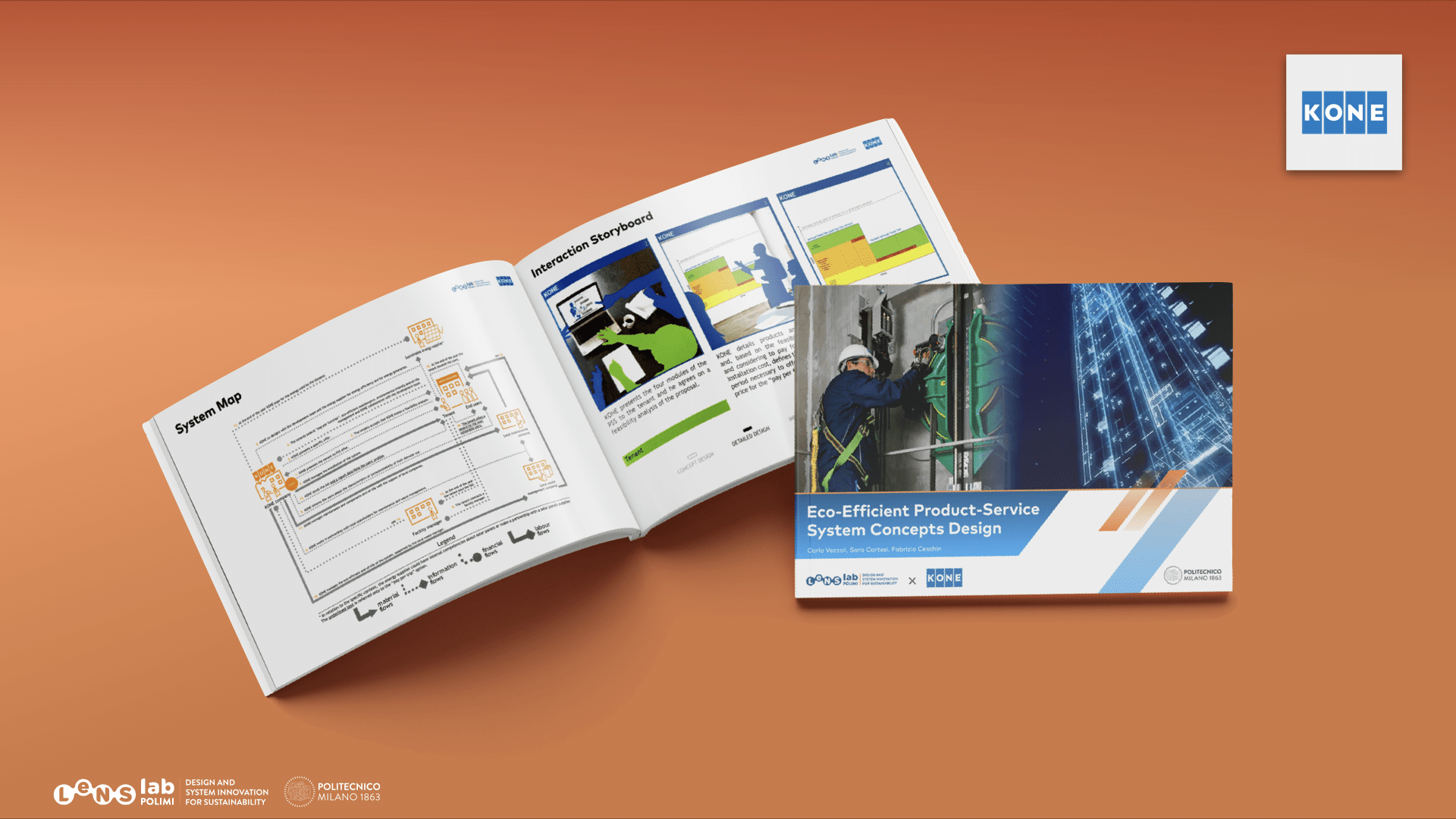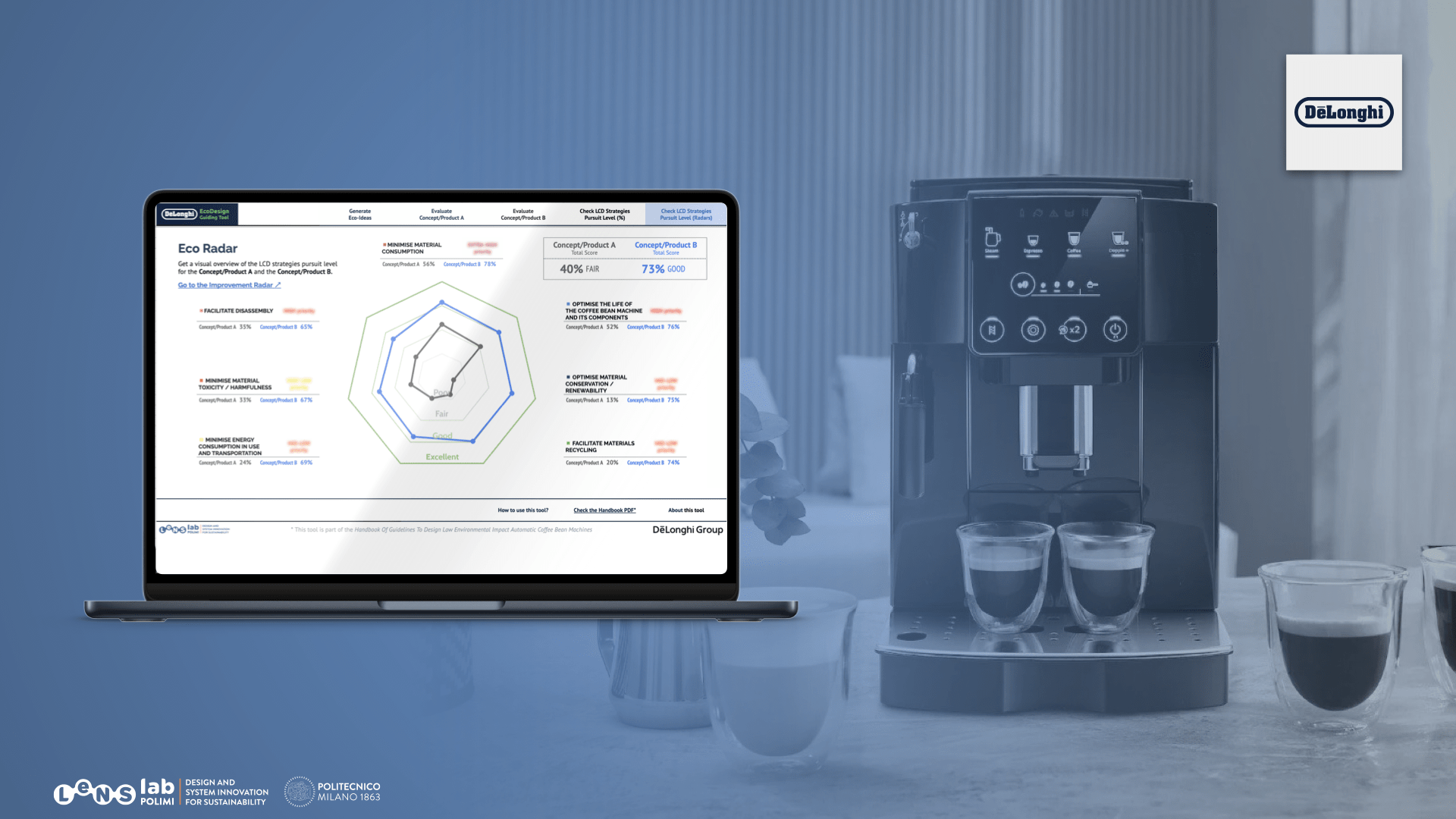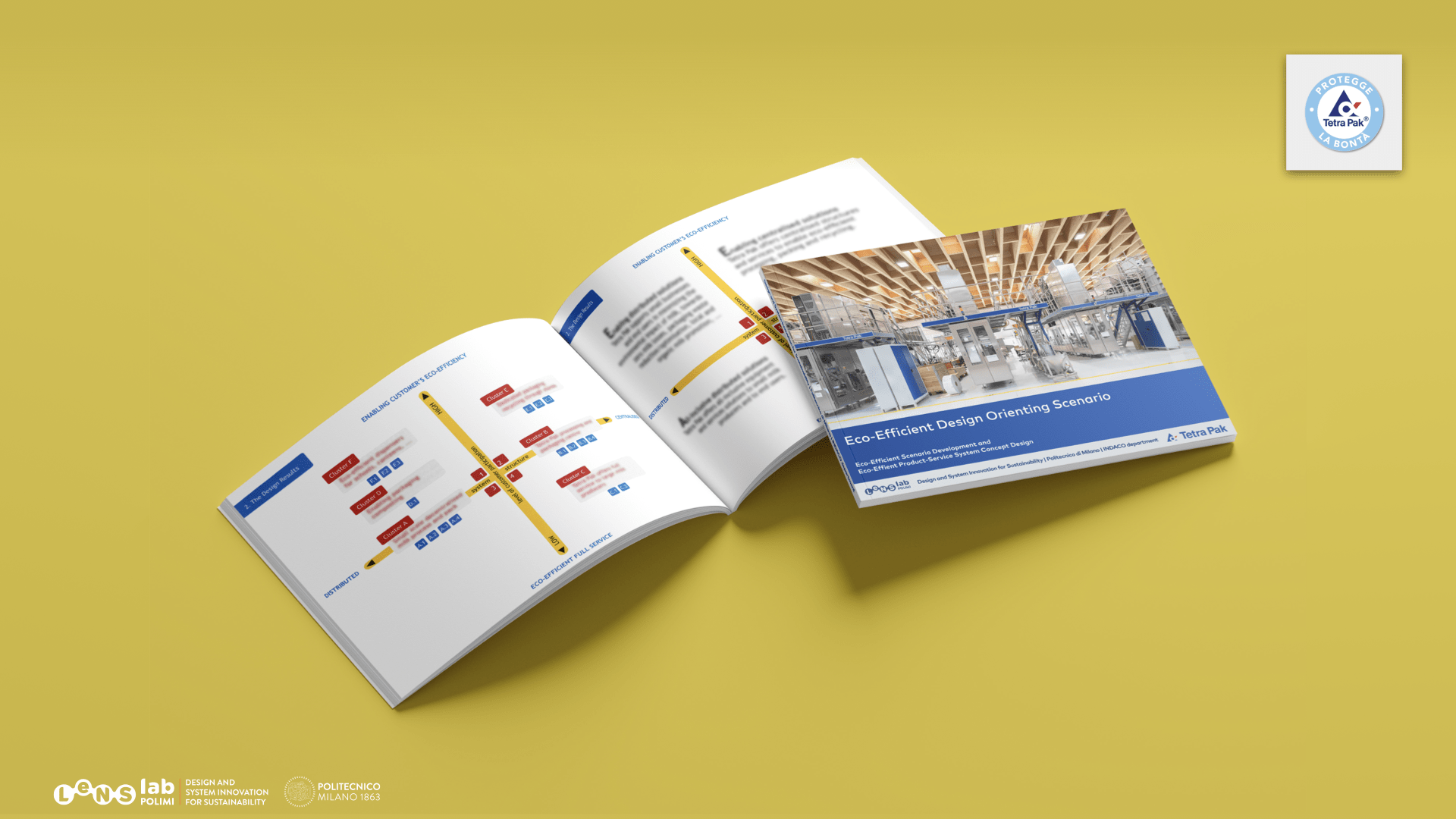FURNITURE PRODUCT ENVIRONMENTAL SUSTAINABILITY
FURNITURE USE EXTENSION/INTENSIFICATION
- Facilitate the removal and replacement of easy to wear-out parts, such as mechanisms and joints for movable parts, e.g. wheels or legs of seats, desks and storages.
- Use universal standard elements for mechanisms and joints for movable parts.
- Keep the same joints when changing furniture collections.
- Facilitate the access to parts in order to simplify cleaning, avoiding narrow interspaces, slots and holes, e.g. by designing round internal edges of drawers and shelves for quick and easy cleaning. Natura office chair – Grammer
- [seats] Properly cover chair mechanisms to prevent dust and dirt from accumulating and limiting their functioning, e.g. height adjustment mechanisms.
- [desks] Properly cover desk height adjustment mechanisms to prevent dust and dirt from accumulating and limiting their functioning.
- [storage] Install compensation boards at the top/bottom/side of storage furniture to avoid dust from getting under/on the top/side.
- Consider using surfaces that are resistant to dust and dirt, such as sleek surfaces, dust/dirt-repellent surfaces or textiles.
- Design products that allow maintenance with easily available tools, e.g. use screws with standard hexagonal heads in seats, desks and storage furniture.
- Provide a maintenance kit for cleaning, such as customized brushes to clean (unavoidable) narrow interspaces, slots and holes or surface specific staining removal detergent for seats, desks and storage furniture.
- Provide information on how to clean the product and multi-context maintenance tool kit.
- Facilitate alternative cleaning solutions or more automatic cleaning systems, such as steam cleaning or UV solutions.
- Reduce the need of maintenance operations/procedures, e.g. with textured seats cover to hide stains or with anti-dust surface treatments on seats, desk and storage products.
- Design modular products to facilitate the substitution/cleaning of parts instead of substitution/cleaning of the entire product. The Klippan sofa – Ikea; Let it be modular sofa – Poltrona Frau; Vimle sofa – Ikea
- Design reconfigurable furniture that is able to adapt to different spaces/situations, such as modular desk and storage structures that can be used for both the transformation of a given office space or for a new function (e.g. an individual working station that can be transformed into a collective one, and that can also be rearranged if the office moves to a new location). The Klippan sofa – Ikea; Hack table system – Vitra; Let it be modular sofa – Poltrona Frau; Vimle sofa – Ikea
- Design family of products instead of single ones, with different properties and functions that enable adaptation. Modular furniture – Gispen
- Include add-on parts to transform and/or upgrade function and properties of the furniture.
- Design for changeable ergonomic positions, e.g. height adjustable desk and chairs.
- Avoid premature aesthetic obsolescence by designing furniture that can be customized (e.g. exchangeable seat covers) or personalised with a corporate identity via software to avoid add-on brand identification operations (printing, adhesive plates, etc.) Modular furniture – Gispen
- Consider designing multi-functional products that can adapt to the user’s development (physical and cultural). Care practical multifunctional product – Stokke
- [Seats] Design modular and on-site upgradable seats, allowing the user to substitute (with standard tools) fixed feet with wheels and/or fixed components to adjustable ones. Modular furniture – Gispen; Let it be modular sofa – Poltrona Frau; Vimle sofa – Ikea
- [Desks] Design modular and on-site upgradable desks, allowing the user to add (with standard tools) drawers, change drawer’s typology, add inner cabling cabinets, etc.
- [Storage] Design modular and on-site upgradable storage, allowing the user to add (with standard tools) shells, change drawer’s typology, etc.
- Co-design furniture and connection platforms such as flooring, ceilings and walls.
- Include multiple connection possibilities on tables and storages, e.g. electricity cables, joints to combine table surfaces, etc.
- Provide website and/or app with instructions and tools to enable maintenance and repair by the user, such as periodic maintenance procedures, e.g. cleaning of hard surfaces (desk, storage), inspection, repair and lubrification (height-adjustable mechanism for office chairs or wheels).
- [Desks] If related to tech devices, enable upgrading and design reconfigurable desks according to forecastable technology development, e.g. Wi-Fi system/wireless system of automated desks.
- Simplify the furniture as much as possible, e.g. by reducing the number of components.
- Avoid weak connections, especially movable mechanisms such as fasteners joints between plastic components in chairs; use certified connectors (e.g. by CE).
- Design resistant furniture to prevent damage: use high resistant materials for sensitive parts, e.g. edges of tables and cabinets, office seat back joints Navy Chair – Emeco
- Use highly resistant materials for handles, hinges and sliding mechanisms of drawers and storage furniture doors.
- [Storage] If using glass doors, consider stratified glass.
- [Desks] Avoid that table edges get quickly worn off.
- Facilitate the access for the removal of parts and components (such as expensive mechanisms) that can be remanufactured, e.g. use reversible connections or two-way snap-fits without glue within assemblies; use removable cover protection to interchange components between products by differentiating structural parts from surface ones. Remanufacture furniture – Davies Office
- Facilitate the access for the removal of parts (especially expensive mechanisms) that can be re-used, such as chair (e.g. seats, wheels, tripod legs, covers) and storage locker components (e.g. hinges, metal, rubber feet, handles, locks).
- Use reversible connections or two-way snap-fits (avoiding whenever possible gluing in assembling processes), use removable cover protection to interchange components among objects (differentiate structure and surface).
- Facilitate disassembly, especially for parts that are easy to wear out such as task chair wheels and back, upholstery and desk surfaces, by using reversible connections or two-way snap-fits system. Mirra chair – Herman Miller
- Facilitate the replacement of external parts, such as castors, sofa covers (clothes), upholstered chair. Ara Chair – Orangebox
- [Desks] Facilitate the disassembly of tabletops from the supporting structure/legs. Lisabo table – Ikea
- [Seats] Facilitate the dismantling and substitution of upholstery/foam/ fabrics/leather of seats.
- Design modular and interchangeable parts and components. Modular furniture – Gispen
- Design standard parts and components that can be replaced, improve durability and facilitate easy repair, e.g. handles, screws, feet, shelves for storage lockers; wheels, bearings, screws, bolts, felt pads pillows, covers for chairs; pillows, felt, pads, feet for sofas.
- Increase the resistance of easy to wear-out or easy to damage parts by using more resistant materials.
- Increase the resistance of easy to wear-out or easy to damage parts by using protective removable layers, e.g. table edges, seat upholstery and fabrics, seat wheels, highadjustable mechanisms, armrest, table surfaces, storage shells; and by avoiding painting layers sensible to scratches.
- Foresee re-use of auxiliary parts, e.g. desktop divider as shelves, the protective cover of mechanisms as sofa pillows, writing board of conference chairs. Remanufacture furniture – Davies Office
- Incorporate packaging that can be re-used by the manufacturer, e.g. by using packaging that can adapt to different products or by using foldable and more resistant packaging materials.
- Incorporate collapsible packaging.
- Design structural parts that can be easily separated from external parts, such as mechanisms and their protection parts, bookcases and doors.
- [Seats] Facilitate the substitution of furniture upholstery fabrics/leather by designing easy removable slipcovers.
- Facilitate the substitution of movable parts, such as castors of furniture products, arm/ backrest of chairs and height-adjustable mechanisms.
- Plan adequate tolerance or dimensioning at weak points, such as connection points or most used parts (e.g. storage corner joints, hinge and chair casters).
- Avoid self-tapping screws that can be screwed and unscrewed only a few times.
- Consider material abundance in points which are subject to wear and tear, e.g. abrasion of castors.
- Use a larger amount of finishing/coating materials on surfaces that tend to deteriorate rapidly (e.g. table or storage edges).
- Design products with integrated functions, e.g. chairs that allow different positions, storage furniture with integrated locker.
- Design product-service systems for shared use.
- [Storage] Consider storage furniture that is adaptable for different purposes, such as storage of personal belongings/eating (e.g. heating/cooling).
- [Desks] Consider tables that are adaptable/customizable (e.g. exchangeable drawers for personal belongings).
REDUCE MATERIAL CONSUMPTION OF FURNITURE
- Dematerialize the furniture or some of its parts, such as handle systems in store component shapes with handle as “hole” embodied in locker door shape. Ripple table – Layer Design
- Design suitable dimensions for structure parts, e.g. reduce the thickness of components according to material properties, resistance requirements and processing technology.
- Apply 3D printing in furniture, e.g. for chair backrest and handles.
- Avoid over-dimensioning by analysing the function, standard references and typical use of the furniture.
- Use reinforcing structures such as ribbed/honeycombed (e.g. for tabletop) structures or T-sections, hollow shapes (for rotationally moulded plastics and die-cast metals) to improve stiffness and avoid distortions. Setu chair – Herman Miller
- Take material reduction and structural reinforcement, such as rib reinforcements to reduce materials, into consideration especially regarding storage doors or desks. Ripple table – Layer Design
- Avoid parts or components which are not strictly functional. Eco Monomateric wooden chair – Futureproof
- Provide storage cabinets options with reduced components, e.g. with or without doors.
- Prefer production processes that minimise scraps and waste, such as bent plywood instead of massive wood. Eco Monomateric wooden chair – Futureproof
- Design tabletop, storage shelves and sides taking into consideration modularity and standardization to avoid leftovers.
- Select processing technology according to material properties and product requirements, such as die casting instead of moulding (e.g. for chair legs, etc.).
- Avoid waste in injection moulding plastic parts caused by excessive wall thickness.
- Apply 3D printing technologies when possible, e.g. for handles. From plastic waste to furniture with 3D printing – The New Raw
- Use packaging material only where it is strictly necessary, e.g. protect with consistent packaging fragile parts of the furniture, such as glass tabletop, handles in locker storage, etc.
- Design for the most efficient use of materials needed for maintenance, such as self-cleaning materials, materials that avoid/reduce the need of cleaning agents (e.g. water, soap, detergent), water repellent materials.
FURNITURE MATERIALS LIFE EXTENSION
- Facilitate and foresee closed-loop recycling of materials within components with lower aesthetic/formal requirements.
- Facilitate recycling of highly structural materials (e.g. wheels) into components with lower mechanic requirements (e.g. seat back).
- Facilitate recycling of massive wood into chipboard.
- Facilitate recycling of visible components into non-visible filling materials (e.g. chair or sofa pillows).
- Facilitate and foresee closed-loop recycling of materials within components with lower mechanical requirements.
- Avoid the use of contaminant materials, such as glued paper labels on the furniture and glued natural fibres.
- Prefer label information that could be embedded in the injection process.
- Avoid painting or coating on polymers (e.g. for chair seat, arms, back) in favor of colored polymers.
- Select materials that recover more easily the original material characteristics after recycling.
- Adopt ribbed structures (or similar) to improve the stiffness of polymers instead of using reinforcing fibres, e.g. Nylon reinforced with glass fibres (PA-GF) as often involved in office chairs [chair].
- Prefer thermoplastic polymers instead of thermosetting.
- Avoid composite materials such as sandwich laminates (e.g. for tables or storage shelves) or fiber-based components (e.g. for chairs) in favor of monomaterial solutions (metals or polymers).
- Avoid the use of fireproof additives by selecting thermoplastics that resist to high temperatures.
- Design furniture considering the existing recycling systems, e.g. urban waste collection system.
- Reduce product dimension and foresee easy stocking of disposed furniture products.
- Facilitate the disassembly of furniture junctions. Lisabo table – Ikea
- Design chair, tables and storage shapes according to stoking standards.
- Design stackable chairs, foldable tables or compactable storage.
- Facilitate the design of components for easy stocking, e.g. tabletops, shelves.
- Reduce the weight of the furniture components/materials.
- Design furniture that is able and easy to be compressed when disposed.
- Inform the user about how the furniture or its parts can be disposed of.
- Codify materials according to their type. Mirra chair – Hermann Miller
- Add information on material age, conducted recycling processes and additives use.
- Indicate the presence of toxic residues and contaminant materials.
- Apply identification codes in places visible during the disassembly, e.g. near joints, places not subjected to wear out, on flat surfaces.
- Use international standard identification systems, such as SPI codes, especially when open-loop recycling may occur.
- Use one single material on a furniture product or one single material to produce each one of its parts, if possible (mono-material strategy). CAB Chair System – Cassina; Celle office armchair by Hermann Miller
- Avoid the use of contaminant materials, such as adhesives for labels.
- If necessary, facilitate the removal of contaminant materials, such as water-based adhesives for labels.
- Use compatible materials that could be recycled together with the furniture or its subassembly.
- Use joints made of the same or with compatible materials to the parts that need to be joined. Facilitate the sorting process in wood recycling.
- Facilitate the design of components for easy stocking, e.g. tabletops, shelves.
- [Desks] Facilitate the separation of bolts, nuts, screws and other small parts that are made of non-compatible materials, e.g. metal joints over plastic components.
- [Seats] Consider castors with cores made of one material and that enable the easy disassembly of the outer rubber part.
REDUCE TOXICITY OF THE FURNITURE SYSTEM
- Avoid the use of toxic and harmful materials for furniture products, such as toxic paintings, additives, adhesives or refinements for table-tops/edges, storage surfaces or chair joints. Customized organic furniture – EcoBalanza
- Prefer water-based varnishing, additives, adhesives or refinements for all components of furniture. Renewable and biodegeable material furniture – Woodly
- Avoid the use of additives and adhesives causing toxic and harmful emissions. Renewable and biodegeable material furniture – Woodly
- Avoid toxic and harmful finishing processes/materials, such us formaldehyde and chromium plating.
- Minimise the dispersion of toxic and harmful residues during furniture’s use, such as Volatile Organic Compounds (VOC) emissions.
- [Seats] Use low emission polyurethane or latex foam padding materials.
- [Seats] Select Polyurethane foam complying with the requirements for VOC emissions.
- Select surface material and finishing processes for furniture that avoid the need of toxic detergent for maintenance, such as use stainless steel with semi-gloss treatment.
- Select energy resources that minimise toxic/harmful emissions during pre-production and production, such as electricity coming from renewable sources instead of fossil fuels.
- Select energy resources that minimise toxic/harmful emissions during distribution, such as electric vehicles.
- Select energy resources that minimise toxic/harmful emissions in disposal treatments, e.g. avoid furniture moving mechanisms with heavy metals batteries.
REDUCE ENERGY CONSUMPTION OF THE FURNITURE SYSTEM
- Design for local-focused resources supply, such as energy generated by local renewable systems (e.g. photovoltaic systems, wind turbines, geothermal systems, hydroelectric systems).
- Design for energy consumption efficiency, such as planning a production process shared by different furniture components.
- Prefer materials with low energy consumption in pre-production and production, e.g. recycled aluminium instead of primary aluminium.
- Prefer packaging processing technologies with low energy consumption levels.
- Design compact or compactable furniture, favouring high-density storage.
- [Seats] Design stackable visitor chairs or components.
- Design for on-site furniture assembly. UP Vacuum packed seat collection – B&B Italia; Flat packed and easy assembled stool – King & Webbon; Hack table system – Vitra, Olga montable chair – Ikea; Packaging artisan bamboo bed
- Minimise furniture’s weight, especially non-structural elements.
- Choose lighter materials compared to others with the same functional properties.
- Reduce packaging weight/volume to reduce resource consumption in transportation Flat packed and easy assembled stool – King & Webbon; Olga montable chair – Ikea
- Prefer container ships and trains rather than truck transportation for furniture distribution.
- Optimize logistics, reduce the distance between providers and users. Hack table system – Vitra
- Favour mechanical devices instead of electric powered devices, e.g. for adjustable office seats. iRock power generating rocking chair – Micasa Lab
- Prefer cleaning processes that avoid energy consuming equipment.
- Avoid internet-based manual and instruction for furniture assembling, maintenance, etc.
RESOURCES CONSERVATION/BIOCOMPATIBILITY FOR FURNITURE
- Avoid materials from exhaustible resources.
- Favour the use of highly renewable materials. Packaging artisan bamboo bed; a certified timber for furniture production, such as FSC (Forest Stewardship Council) and PEFC(Programme for the Endorsement of Forest Certification). Renewable and biodegeable material furniture – Woodly
- Use materials derived from other production processes, such as chip wood scraps from massive wood production (e.g. table-tops) or fabric for chair upholstery taken from furniture production waste (e.g. sofa).
- Use components from disposed products, such as handles, joints and mechanisms, e.g.use height and armrest regulation of chairs/desks as cables holder for desks. RePlastic Tables – Rype Office
- Use recycled materials or recycled materials combined with new materials (e.g. mixtures for injection moulding consisting of recycled plastic and recycled wood chips). Navy Chair – Emeco; Econyl synthetic waste into new nylon yarn – Aquafil
- Select renewable/non exhaustible energy resources.
- Select small scale local energy resources.
DESIGN FOR FURNITURE DISASSEMBLY
- Prioritize the disassembly of toxic and dangerous components or materials.
- Prioritize the disassembly of components or materials with higher economic value, such as metal mechanism or wood panel. Office chairs – Wilkhahn
- Prioritize the disassembly of more easily damageable or consumable components and materials, such as table top, book shelves, etc. Mirra chair – Herman Miller
- Prefer modular structures, such as modular closet, sofa, etc. Vimle sofa – Ikea
- Construct the product into easily separable and manipulatable sub-assemblies, such as bookshelves/wardrobe with inner panels. Ara Chair – Orangebox
- Facilitate the removal of other components like handle.
- Minimise the overall dimensions of furniture.
- Minimise the quantity of different components.
- Minimise hierarchically dependent connections among components, such as the mechanisms of task chair.
- Co-design cutting or breaking paths with appropriate separation technologies for separating incompatible materials.
- Suggest to the users how and with what device they could separate incompatible materials.
- Provide information to the user together with the furniture about the characteristics of crushing separation, such as providing video resources online (website, app).


